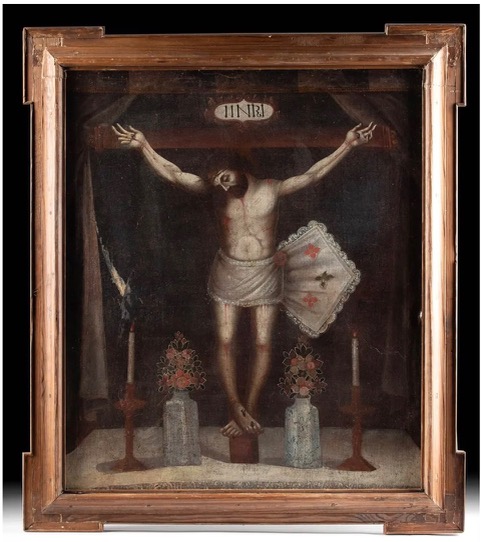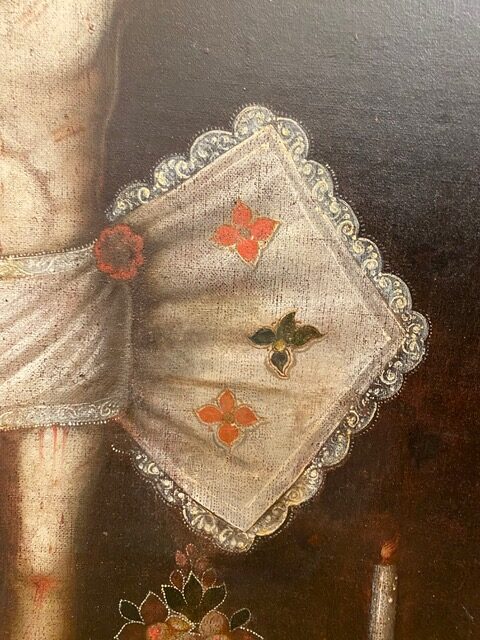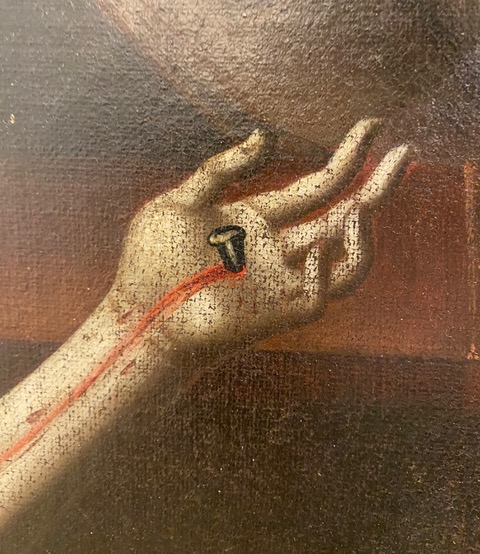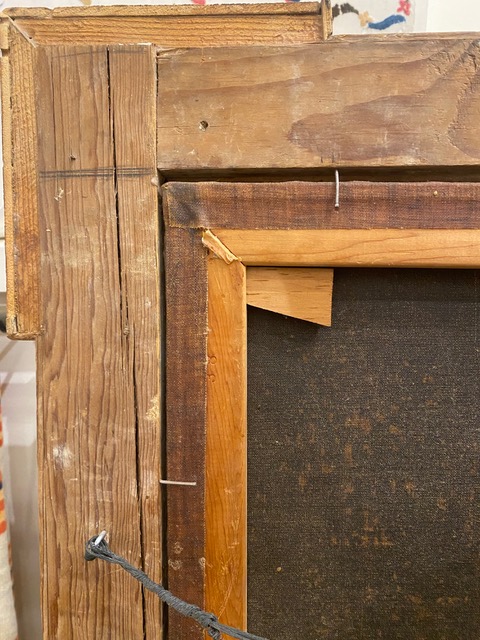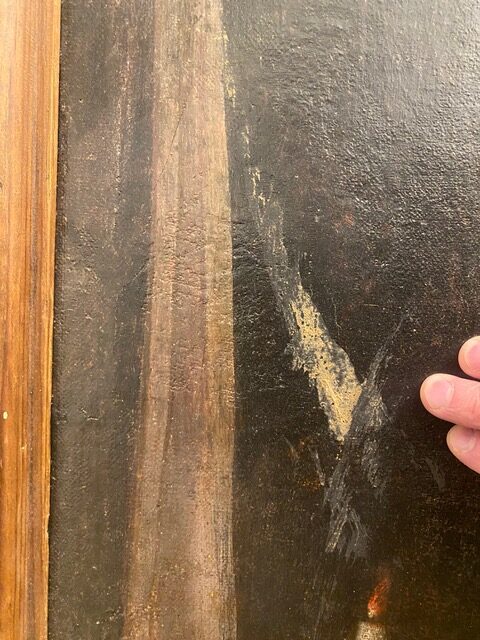18th C. Cuzco Painting “Christ Of The Earthquakes”
Item: 1664
Origins: Cuzco, Peru
Date: 18th Century
Media: Oil on canvas
Dimensions: 38.125″ L x 32.75″ W Size (frame): 44.625″ L x 39.5″ W
Description: This is a powerful depiction of Christ of The Earthquakes. The power comes, in part, from the lighted focus on Christ with a darkened background. The cross is visible, but only barely. Pronounced are his hands, his powerful arms and the slumped head to one side, looking peaceful in his final moments. The devastating, human condition is shown here with the strongest imagery imagined.
“Christ of the Earthquakes” (Senor de los Temblores or Taytacha Temblores) – the statue of the crucified Christ presiding over a side chapel in the Cathedral de Cuzco. The theme refers to a miracle that took place in 1650 when an earthquake threatened the city of Cuzco. Miraculously, the tremors came to a halt when worshippers processed the statue through the streets. Known as a “statue painting” because it represents a “miracle-working” sculpture, this painting was created so that worshippers could pray to the statue from a distance. Moreover, paintings like this are thought to possess the power to create miracles as well. The composition depicts Christ of the Earthquakes on a wooden processional base. Burning candles and lavish floral arrangements in crystal vases to either side are special offerings to the statue. The painting is mounted in a hand carved wood frame. It is not known if this was the original frame. The frame does show substantial age.
See a similar 18th century Christ of the Earthquakes painting at the Denver Art Museum (accession number 1969.346). According to Mayer Fellow for Spanish Colonial Art Sabena Kull’s description, “This picture is a type of painting commonly referred to as a ‘statue painting,’ since it represents a specific miracle-working sculpture in a two-dimensional painted format. Statue paintings, such as this one, provided worshippers with the ability to offer devotion to important sculptures from afar. They were also understood as embodying the numinous powers of the original image and could even work miracles in their own right. In the late 1700s and 1800s, as the sculpture of Christ of the Earthquakes consolidated its powers in the Cuzco region, individuals commissioned paintings of the renowned image for display in their private homes and chapels.” Kull goes on to note that the particular flowers depicted in flower arrangement offerings featured in Christ of the Earthquake statue paintings were “important in both Christian and Andean religious traditions”. For example, in addition to lilies and roses, trumpet-shaped red blossoms were used to represent native Andean nucchu and cantuta flowers. (source: Denver Art Museum website)
Condition: Canvas has areas of repair and restoration, primarily impacting the background rather than the central imagery. Canvas has been relined. Some expected surface wear and accretions (perhaps wax from burning candles) but imagery is still vivid. The frame has some surface wear, cracks, areas of repair, and may have had adornments or inlays embellishing the corners at one time.
Provenance: ex- Constance McCormick Fearing, Monticeto, California, USA collection. Ms. Fearing of the McCormick Harvester International family whose fortune was made in the farming equipment field. She was heir to the McCormick family fortune, whose McCormick Reaper revolutionized agriculture and established the modern grain trade by beginning the mechanization of the harvesting of grain. A serious collector, who lived in both Mexico and Santa Barbara until her death in 2023, her collections can be found today in many museums including LACMA and the Santa Barbara Art Museum among others. The label on the back says: Santa Barbara Museum of Art in print on the bottom. The upper label is hand written, Modern Mex Art 10/11/70, Unk (meaning Unknown painter), Crucifx PTG Oil, Lender: Fearing.
Price: 7,500

